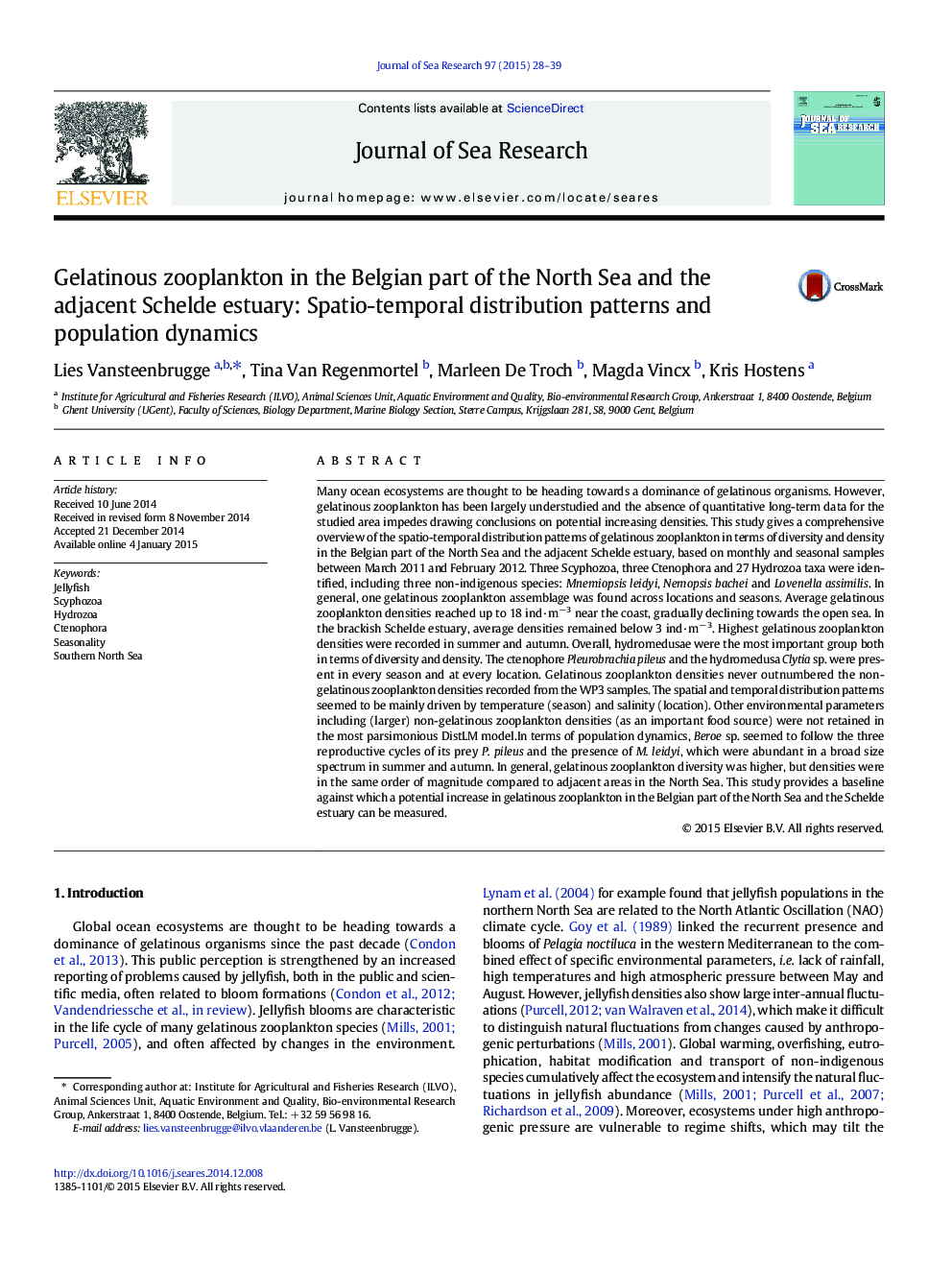| کد مقاله | کد نشریه | سال انتشار | مقاله انگلیسی | نسخه تمام متن |
|---|---|---|---|---|
| 4549775 | 1627477 | 2015 | 12 صفحه PDF | دانلود رایگان |

• We monitored the Belgian part of the North Sea and the Schelde estuary.
• We found a high diversity (33 taxa) of gelatinous zooplankton.
• Highest densities were observed in summer and autumn and at the coastal location.
• The same species assemblage was found, and hydromedusae were the most diverse and abundant group.
• Temperature, salinity and oxygen concentration structure the spatial and temporal distribution.
Many ocean ecosystems are thought to be heading towards a dominance of gelatinous organisms. However, gelatinous zooplankton has been largely understudied and the absence of quantitative long-term data for the studied area impedes drawing conclusions on potential increasing densities. This study gives a comprehensive overview of the spatio-temporal distribution patterns of gelatinous zooplankton in terms of diversity and density in the Belgian part of the North Sea and the adjacent Schelde estuary, based on monthly and seasonal samples between March 2011 and February 2012. Three Scyphozoa, three Ctenophora and 27 Hydrozoa taxa were identified, including three non-indigenous species: Mnemiopsis leidyi, Nemopsis bachei and Lovenella assimilis. In general, one gelatinous zooplankton assemblage was found across locations and seasons. Average gelatinous zooplankton densities reached up to 18 ind·m−3 near the coast, gradually declining towards the open sea. In the brackish Schelde estuary, average densities remained below 3 ind·m−3. Highest gelatinous zooplankton densities were recorded in summer and autumn. Overall, hydromedusae were the most important group both in terms of diversity and density. The ctenophore Pleurobrachia pileus and the hydromedusa Clytia sp. were present in every season and at every location. Gelatinous zooplankton densities never outnumbered the non-gelatinous zooplankton densities recorded from the WP3 samples. The spatial and temporal distribution patterns seemed to be mainly driven by temperature (season) and salinity (location). Other environmental parameters including (larger) non-gelatinous zooplankton densities (as an important food source) were not retained in the most parsimonious DistLM model.In terms of population dynamics, Beroe sp. seemed to follow the three reproductive cycles of its prey P. pileus and the presence of M. leidyi, which were abundant in a broad size spectrum in summer and autumn. In general, gelatinous zooplankton diversity was higher, but densities were in the same order of magnitude compared to adjacent areas in the North Sea. This study provides a baseline against which a potential increase in gelatinous zooplankton in the Belgian part of the North Sea and the Schelde estuary can be measured.
Journal: Journal of Sea Research - Volume 97, March 2015, Pages 28–39